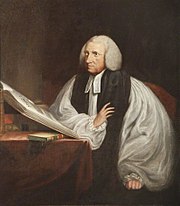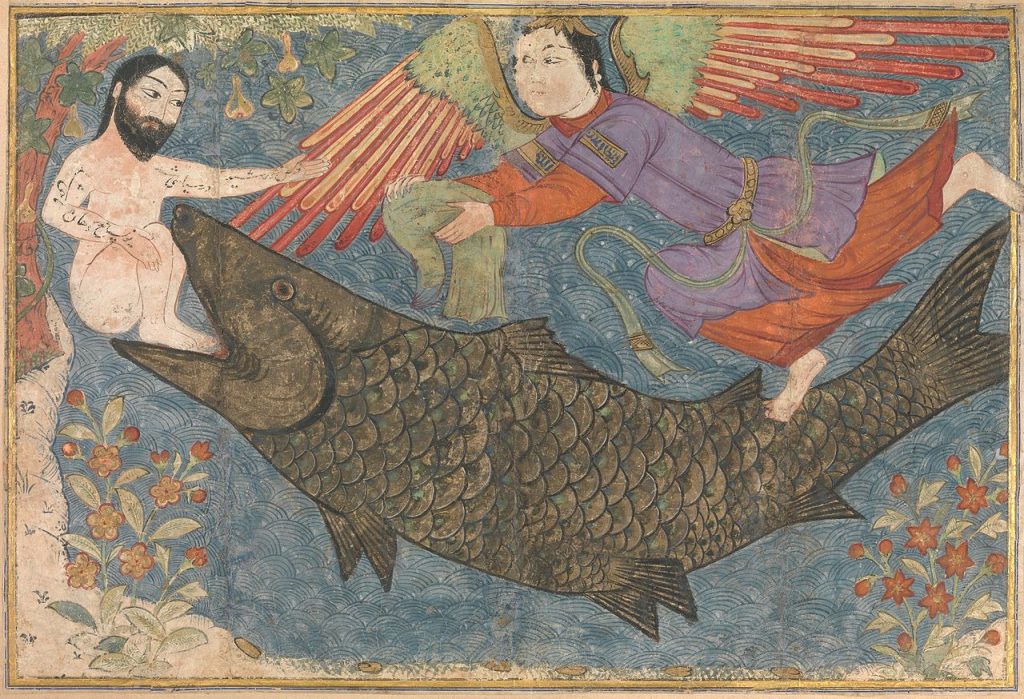 Nanine Charbonnel has written a Prelude of a hundred pages, three chapters, to her discussion of the historicity of Jesus, Jésus-Christ, Sublime Figure de Papier. Well aware of the vitriol that generally accompanies the question, she explains her hope that such an introduction will help smooth the way for a calm, considered discussion of the topic.
Nanine Charbonnel has written a Prelude of a hundred pages, three chapters, to her discussion of the historicity of Jesus, Jésus-Christ, Sublime Figure de Papier. Well aware of the vitriol that generally accompanies the question, she explains her hope that such an introduction will help smooth the way for a calm, considered discussion of the topic.
In this post begin to discuss the final section of that last chapter of her Prelude. I won’t complete it because there is too much of interest to try to cram it all into a single post. In this post we’ll look at an example of how wordplay in a biblical narrative speaks against the story having a historical basis.
The previous post introduced the impossibility of separating the individual from the collective meaning of biblical narratives, made even more difficult by the ready confusion of tenses — the future spoken of as past yet bearing on the present time for the reader.

NC reaches back to the eighteenth century’s Robert Lowth who made the same point in Lectures on the Sacred Poetry of the Hebrews. Lowth distinguished normal allegory or parable from what he labelled a “mystical allegory” in biblical narratives. A normal allegory consists of a symbol or metaphor representing another figure. When a wild beast is used to represent a rampaging empire no-one thinks the story, at any level of comprehension, is about the wild beast. But as we have seen, we find something different in the patriarchal narratives, for instance. Abraham and Sarah’s adventures in Egypt are about both Abraham and Sarah and the Exodus story of their descendants.
Charbonnel quotes Robert Lowth who argues that “mystical allegory” sets the narratives of the Hebrew Scriptures apart from other literature. The “mystical allegories” derive their imagery entirely from within Jewish religious thought.
This latter kind of allegory [= “mystical allegory”], on the contrary, can only be supplied with proper materials from the sacred rites of the Hebrews themselves ; nor can it be introduced, except in relation to such things as are directly connected with the Jewish religion, or their immediate opposites ; for to Israel, Sion, Jerusalem, in the allegorical as well as the literal sense, are opposed Assyria, Babylon, Egypt, Idumea . . . (Lowth, 123. From the English translation of the Latin original; NC quotes French translation)
Not all critics agreed with Lowth on this point. Included in the English translation were notes by Professor Michaelis, who comments on Lowth’s idea of “mystical allegory”:
I admire the perspicacity of our Author in discovering this circumstance, and his candour in so freely disclosing his opinion. I am, however, much inclined to suspect those qualities which are supposed to be altogether peculiar to the sacred poetry of the Hebrews ; and there is, I confess, need of uncommon force of argument to convince me, that the sacred writings are to be interpreted by rules in every respect different from those by which other writings and other languages are interpreted ; but, in truth, this hypothesis of a double sense being applicable to the same words, is so far from resting on any solid ground of argument, that I find it is altogether founded on the practice of commentators, and their vague and tralatitious opinions.—M. (123 f)
Elaborating on his objection M subsequently insists that Psalm 110 is exclusively about the Messiah and has no other meaning, certainly not also applying to David; Psalm 18, on the other hand, cannot refer to the Messiah but can only refer to one person, David.
Then,
There is likewise this further distinction, that in those other forms of allegory [e.g. a lion representing a marauding kingdom] the exterior or ostensible imagery is fiction only ; the truth lies altogether in the interior or remote sense, which is veiled, as it were, under this thin and pellucid covering. But in the allegory of which we are now treating [Lowth’s “mystical allegory”], each idea is equally agreeable to truth. The exterior or ostensible image is not a shadowy colouring of the interior sense, but is in itself a reality; and although it sustain another character, it does not wholly lay aside its own. For instance, in the metaphor, or parable, the Lion, the Eagle, the Cedar, considered with respect to their identical existence, are altogether destitute of reality ; but what we read of David, Solomon, or Jerusalem, in this sublimer kind of allegory, may be either accepted in a literal sense, or may be mystically interpreted according to the religion of the Hebrews ; and in each view, whether considered conjunctly or apart, will be found equally agreeable to truth. (Lowth, 124)
For Lowth, this was the work of the Holy Spirit:
I had occasion before to remark the liberty which is allowed in the continued metaphor, of mingling the literal with the figurative meaning, that is, the obvious with the remote idea, which is a liberty altogether inconsistent with the nature of a parable. But to establish any certain rules with regard to this point in the conduct of the mystical allegory, would be a difficult and hazardous undertaking. For the Holy Spirit has evidently chosen different modes of revealing his sacred counsels according to the circumstances of persons and times, inciting and directing at pleasure the minds of his prophets . . . (124 f)
Names Make the Story Work
The composers of biblical stories assigned meaningful names to both persons and places. Sometimes the meaning is made explicit. Cain, Abel, Babel, Levi and Levites, . . . .

NC refers to a fascinating discussion by anthropologist Mary Douglas on the significance of names (and absence of name) in the story of the stoning of the blasphemer in Leviticus 24. I will quote the entire section from Douglas’s Leviticus as Literature, 205-208, with my own bolded highlighting:
The Curser Cursed
The second story bursts in to the calm sequence of laws . . . . Stoning is not an obvious tit-for-tat riposte for insult or blasphemy, but in the middle of the short story the law of talion is solemnly recited:
Now an Israelite woman’s son, whose father was an Egyptian, went out among the people of Israel; and the Israelite woman’s son and a man of Israel quarrelled in the camp, and the Israelite’s woman’s son blasphemed the Name, and cursed.
And they brought him to Moses. His mother’s name was Shelomith, the daughter of Dibri, of the tribe of Dan. And they put him in custody, till the will of the Lord should be declared to them.
And the Lord said to Moses, ‘Bring out of the camp him who cursed; and let all who heard him lay their hands upon his head, and let all the congregation stone him. And say to the people of Israel, Whoever curses his God shall bear his sin. He who blasphemes the name of the Lord shall be put to death; all the congregation shall stone him: the sojourner as well as the native, when he blasphemes the Name, shall be put to death. He who kills a man shall be put to death. He who kills a beast shall make it good, life for life. When a man causes a disfigurement in his neighbour, as he has done it shall be done to him, fracture for fracture, eye for eye, tooth for tooth; as he has disfigured a man he shall be disfigured. He who kills a beast shall make it good; and he who kills a man shall be put to death. You shall have one law for the sojourner and for the native; for I am the Lord your God.’ So Moses spoke to the people of Israel; and they brought him who had cursed out of the camp, and stoned him with stones. Thus the people of Israel did as the Lord commanded Moses. (Lev 24: 10–23)
The strong retaliatory element does not appear obvious in the story although it is usually taken to illustrate the application of the law. There is nothing at first glance to connect cursing with stoning. ‘Sticks and stones do break my bones, but words will never hurt me,’ but if it is shifted to the verbal level a linguistic parallel appears, with scope for possible word-play. Two words have been used. Verse 15 says: ‘Whoever curses his God.’ The word for the act of cursing [= q-l-l, dishonour, curse] means to trifle, despise, dishonour, make contemptible. But in verse 16 it says: ‘He who blasphemes the name of the Lord.’ This term is slightly different, it has the same stem as ‘to bore a hole’, or ‘to pierce’, and by extension, to specify, to pronounce explicitly, to identify, [= n-q-b, to pierce, bore through, perforate] and from here by extension presumably to name insultingly. Usually the two meanings are unconnected, but there is resonance between them. In the midst of a fight the man did two bad things, first he cursed, and second he spoke against or pierced with words the name of God. When consulted what to do (presumably by the priestly oracle) God commanded that he be put to death by stoning. The Hebrew stem of the verb which is translated as to stone [= r-g-m, to throw, hurl, pelt] actually means to hurl or pelt. In English it could mean to pelt with anything, cabbages, bad tomatoes, or dung, but in Hebrew it is always used to pelt with stones. The oracle does not seem to have chosen a punishment that fits the crime, but if the word play be admitted, the retaliatory principle works in the literary mode: the blasphemer has hurled insults at the name of God, let him die by stones hurled at him. In English the nearest double meaning is the metaphor of mud-slinging. Then the oracle would run as follows: he has slung mud, let him die by mud slung at him.
The literary mode might be right. There are some curious names in this story, which need to be unravelled. We are told that the blasphemer’s mother’s name was ‘Shelomith’, which might suggest retribution, [Cf. shelummat] her father was Dibri, which suggests lawsuit [Cf. dibrah]; by his mother he was of the tribe of Dan, which suggests judgement [Cf. Genesis 49: 16: ‘Dan shall judge his people as one of the tribes of Israel.’]. By a strongly directed selection of the meanings of the names the story told to children could go like this:
‘Once there was a man (with no name), son of Shelomith-Retribution, grandson of Dibri-Lawsuit, from the house of Dan-Judgement, and he pelted insults at the Name . . . and the Lord said “He shall die, he pelted my Name, he shall be pelted to death.” ’
But could not the story be told that way because it is the way it happened in history?
Against this reading it might be claimed that these happened to be the actual names of the mother’s kin of a historical person whose crime has become famous. The fact that this person, the blasphemer, has remained nameless weakens this objection, and to accept it would be to disregard other cases in the Bible where the name has something to do with what is related [Garsiel 1991]. You would have to explain why his mother’s name is given and those of his maternal forebears to three generations, why these names have no further references in Leviticus, and why his own name is not given at all. The primary question is not the translation of the names, but why the names should be there at all. The bit of genealogy might be explained by asking what it contributes to the story itself, but in this case, unlike the case of Aaron’s sons, it contributes precious little.
The punning on names draws attention to the punning about the punishment. One of its literary effects is to take away any pretence of historicity. Let us consider the name-punning as a framing device which conveys a temporary withdrawal from the main narrative. It would be saying this is not a story about Moses, but a story within the Moses story, a tale within a tale. As with other tales within a tale its function is to highlight the main theme of the book [The Balaam story is separated from the sequence of events in the Book of Numbers’ account of the journey from Sinai to the Jordan by similar literary devices]. The play upon names makes it into a fanciful narrative about where retaliation fits into the whole scheme of things. God’s words from the oracle, 24: 17–23, explain that the particular case illustrates the general principle of equivalence, that is the basic principle on which the curser of the living God must be cursed to death. . . . .
Anyone only slightly familiar with the works of the first-century Jewish philosopher Philo knows that one of his primary interests was the meaning of names in biblical narratives. He wrote extensively on how much meaning he could tease out of each from the starting point of puns and etymologies.

Another interesting discussion concerns the story of Jonah. This time I will attempt a paraphrase of key sections of an article by Jacques Chopineau.
The name Jonah is not only a proper name but the common name meaning dove. The word, slightly modified, also means violent, including the wrath of God. (See previous posts for the significance of word play through slight modifications added to a three consonant root in the Hebrew narratives.)
Jeremiah 25:38
Like a lion he will leave his lair,
and their land will become desolate
because of the sword of the oppressor [= ha-Jonah]
and because of the Lord’s fierce anger.
Jeremiah 50:16
Because of the sword of the oppressor [= ha-Jonah]
let everyone return to their own people,
let everyone flee to their own land.
Zephaniah 3:1
Woe to the city of oppressors [= ha-Jonah],
rebellious and defiled!

Hosea 7:11
“Ephraim is like a dove [= ka-Jonah],
easily deceived and senseless—
Hosea 11:11
They will come from Egypt,
trembling like sparrows,
from Assyria, fluttering like doves [= ke-Jonah].
Psalm 68:13
Even while you sleep among the sheep pens,
the wings of my dove [= Jonah] are sheathed with silver
The short story of Jonah is a symbolical tale. The prophet, Dove, pronounces a new world marked by repentance — even for the pagan city of Nineveh. The narrative is replete with hints for the reader to see the deeper meaning of the dove. Mindful of the prophets and Psalms we are aware of the irony of the word having both wrathful and protective associations. The story depicts an entirely new vision of the world where warfare is past and submission to God is universal. In effect, the Dove is announcing the end of the domination by Nineveh, the end of the cruel tyranny of Assyria.
At this point we have another key word-play. Recall from earlier posts the relevance of the shape and meaning of the letters or consonants of the Hebrew alphabet for interpretation of a text. The Assyrians did not write in Hebrew script, of course, but they did use cuneiform; the cuneiform for the root of Nineveh, Nina, is a fish inside a house:
 Israel had been swallowed up by the gentiles — see Hosea 8:8 — by Nineveh, the great fish; the great fish swallowing Jonah played out the same event symbolically.
Israel had been swallowed up by the gentiles — see Hosea 8:8 — by Nineveh, the great fish; the great fish swallowing Jonah played out the same event symbolically.
The dove was swallowed by the fish just as the “silly dove” of Ephraim had been swallowed by Nineveh. The fish, Nineveh, heard the voice of the dove and a new world dawned. The captivity did not spell total doom for Israel but was the harbinger of God’s name being known throughout the world among all nations (Malachi 1:11). . . . But that becomes meaningful as we pay attention to another story of a dove that we know well . . . .
In Genesis 8:11 the dove announced the end of the flood and the arrival of a new world:
When the dove returned to him in the evening, there in its beak was a freshly plucked olive leaf! Then Noah knew that the water had receded from the earth.
Translating a passage from Chopineau:
The reader of Jonas’s libretto is thus invited to discover, through a complex “game” of associations and reminiscences, a teaching of the old prophetism on repentance and divine mercy. The text is full of re-readings (mainly books from the Psalms, Hosea and Jeremiah).
In fact, the narrative (the narrative fiction) is only the garment for a profound reinterpretation of the history of Jerusalem in the light of the present situation which is that of the Persian domination . . . .
This is a new vision of the world, at a time when ancient Israel is bursting into many distant diasporas. Jerusalem is still a religious center, but no longer the capital of an independent kingdom. As a result, the old national religion is seen in a new light.
Continuing . . . .
Lowth, Robert. 1847. Lectures on the Sacred Poetry of the Hebrews. Translated by G. (George) Gregory. London : S. Chadwick. http://archive.org/details/lectusacred00lowt.
If you enjoyed this post, please consider donating to Vridar. Thanks!

Excellent post.
Very interesting. This bolsters my growing conclusion that whoever wrote the Gospel of Mark was a very well studied master of Jewish story telling. From what I’ve seen the writer of Mark almost certainly had contact with material from the DSS and was well schooled in many sophisticated Jewish literary devices. Mark is filled with these types of literary puzzles and word play, and it seems that most of it went over the heads of the Roman audience who took it all literally.
You say there is an English translation of this book?
I can hardly wait for the next entry!!!
This post conjured up my own work on Mark and his reference to “the dove”…. this is so very helpful , not necessarily to dump old interpretations but to add to the vast playful echoes of Mark as he interacts with Israel’s texts and traditions and other writers working on “the afterlife” of these ancient texts throughout the history of biblical and theological hermeneutics…
thanks Neil… keep it coming…